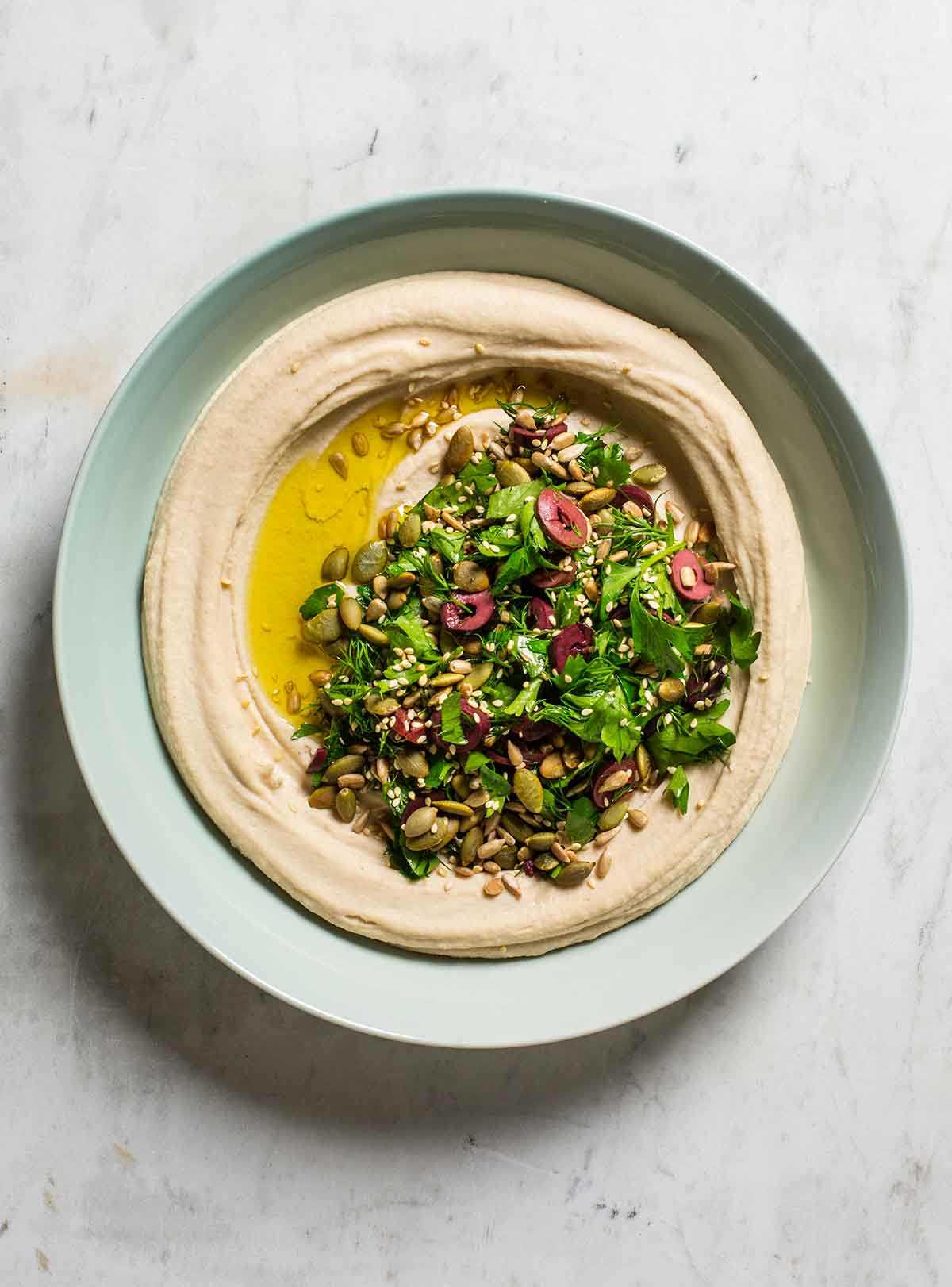
This hummus carries the familiar flavors of garlic, lemon, and tahini against a mild, almost sweet, white bean canvas. We soak and then cook dried white tepary beans in a simple solution of baking soda and salt, which helps speed the deterioration of the tough pectin exterior and soften the beans. This results in a smooth puree with a uniform texture.
We fancy up the hummus with a fresh herb salad that’s simple to make but has complex flavors and textures with parsley and dill, briny kalamata olives, and a trio of nutty, crunchy seeds: pepitas, sunflower, and sesame. This hummus keeps surprisingly well in the fridge, but after one bite, you may find that storage won’t be necessary.–America’s Test Kitchen
Other Non-Traditional Hummus Recipes
We know there are plenty of purists out there that insist hummus isn’t the real deal unless it’s made with chickpeas. We hear you and respect you. If you’re looking for a way to jazz up the classic, sprinkle on some everything bagel seasoning. You won’t be disappointed.
For the rest of us, who can’t get enough of healthy creamy dips in any form, or for those who suffer from a chickpea allergy or intolerance, we’ve also got slow cooker sweet potato hummus or a classic white bean dip for you to try.
White Bean Hummus FAQs
As you’ve likely deduced, white bean hummus is made from white beans. Traditional hummus uses chickpeas (garbanzo beans). Both versions have a similar flavor profile as they are spiced with tahini, lemon juice, garlic, and cumin, but the white bean version tends to be a bit sweeter and smoother. For folks who can’t get past the unique texture of hummus or chickpeas, we highly recommend giving white bean hummus a try.
You can safely store white bean hummus in the fridge for up to three days – but we doubt you’ll be able to keep your carrot sticks, crackers, and bare fingers out of it because it’s so good.
Crackers, breadsticks, vegetables of any sort. (Those little bagged sweet peppers make awesome hummus scoops). Try naan, homemade pita bread or chips, veggie sticks, pretzels, or papad. If you get tired of dipping, go ahead and smear some hummus onto a bagel or sandwich or burger instead of mayo or butter. Your life will never be the same.
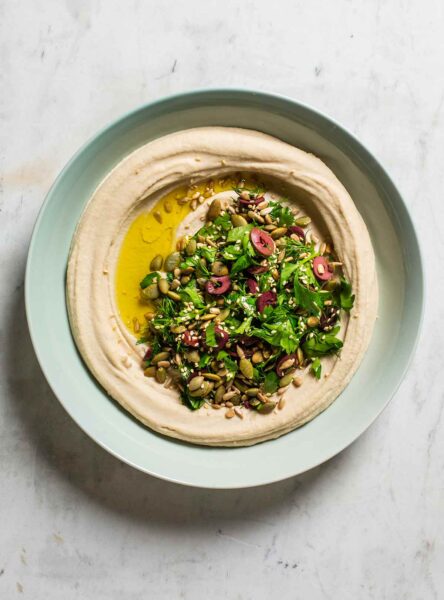
White Bean Hummus
Ingredients
- 1/2 teaspoon table salt for cooking beans plus 1 teaspoon salt, divided, plus more as needed
- 1/4 teaspoon baking soda
- 8 cups plus 1/3 cup water, divided
- 8 ounces (1 1/4 cups) dried white tepary or cannellini beans, picked over and rinsed
- 1/2 cup plus 2 teaspoons (from 3 lemons) fresh lemon juice, divided
- 4 garlic cloves, unpeeled
- 2/3 cup tahini
- 1/4 teaspoon ground cumin
- 3/4 cup chopped fresh parsley
- 1/2 cup chopped fresh dill
- 1/2 cup pitted kalamata olives, sliced thin
- 2 tablespoons extra virgin olive oil, plus extra for drizzling
- 2 tablespoons roasted pumpkin seeds, pepitas
- 2 tablespoons roasted sunflower seeds
- 2 tablespoons white sesame seeds, toasted
Instructions
- Combine salt, baking soda, and 8 cups of water in a large saucepan and stir until the salt is dissolved. Add beans, cover, and soak at room temperature for at least 8 hours or up to 24 hours.
- Bring the beans (still in soaking liquid) to boil over high heat, skimming off any foam that rises to surface. Reduce the heat to medium-low and simmer until the beans are very tender (some beans will blow out), 1 to 1 1/2 hours. Drain the beans in a colander and set aside.
- In a food processor, pulse 1/2 cup lemon juice, 1/3 cup water, garlic, and 1 teaspoon salt until the garlic is finely chopped, about 20 pulses. Transfer to a small bowl and let sit for at least 10 minutes or up to 30 minutes. Strain the lemon juice mixture through a fine-mesh strainer back into the processor, and discard the solids.
- Add the tahini to the processor and process until smooth and well combined, 45 to 60 seconds. Scrape down sides of the bowl and add the cumin and beans. Process until the mixture is very smooth, 3 to 4 minutes. Season with salt to taste and adjust consistency with up to 2 tablespoons additional water as needed. (Hummus can be refrigerated for up to 5 days; bring to room temperature before serving and stir in 1 tablespoon warm water to loosen hummus texture if necessary.)
- Toss the parsley, dill, olives, oil, and remaining 2 teaspoons lemon juice together in a small bowl. Season with salt to taste.
- Transfer hummus to a serving bowl and place the herb salad in the center. Sprinkle pepitas, sunflower seeds, and sesame seeds over top and drizzle with extra oil. Serve.
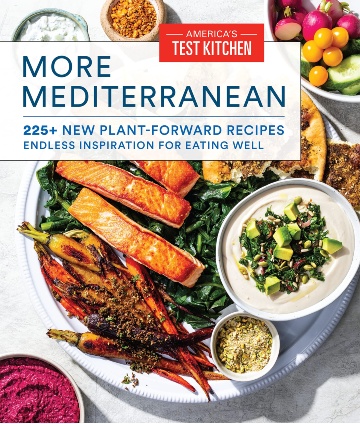
Explore More with AI
Nutrition
Nutrition information is automatically calculated, so should only be used as an approximation.
Recipe Testers’ Reviews
To serve as an appetizer or snack, this is a simple white bean hummus, with a smooth and creamy texture, and so easy to prepare. The ingredients include all the traditional ingredients of a hummus recipe, garlic, lemon, tahini, and cumin. The addition of herb salad gives it an extra and complex flavor, and the seeds are an excellent contrast for texture, so we have a delicious, addictive, satisfying, and colorful hummus. I love this white bean hummus recipe as much as I love the traditional one.
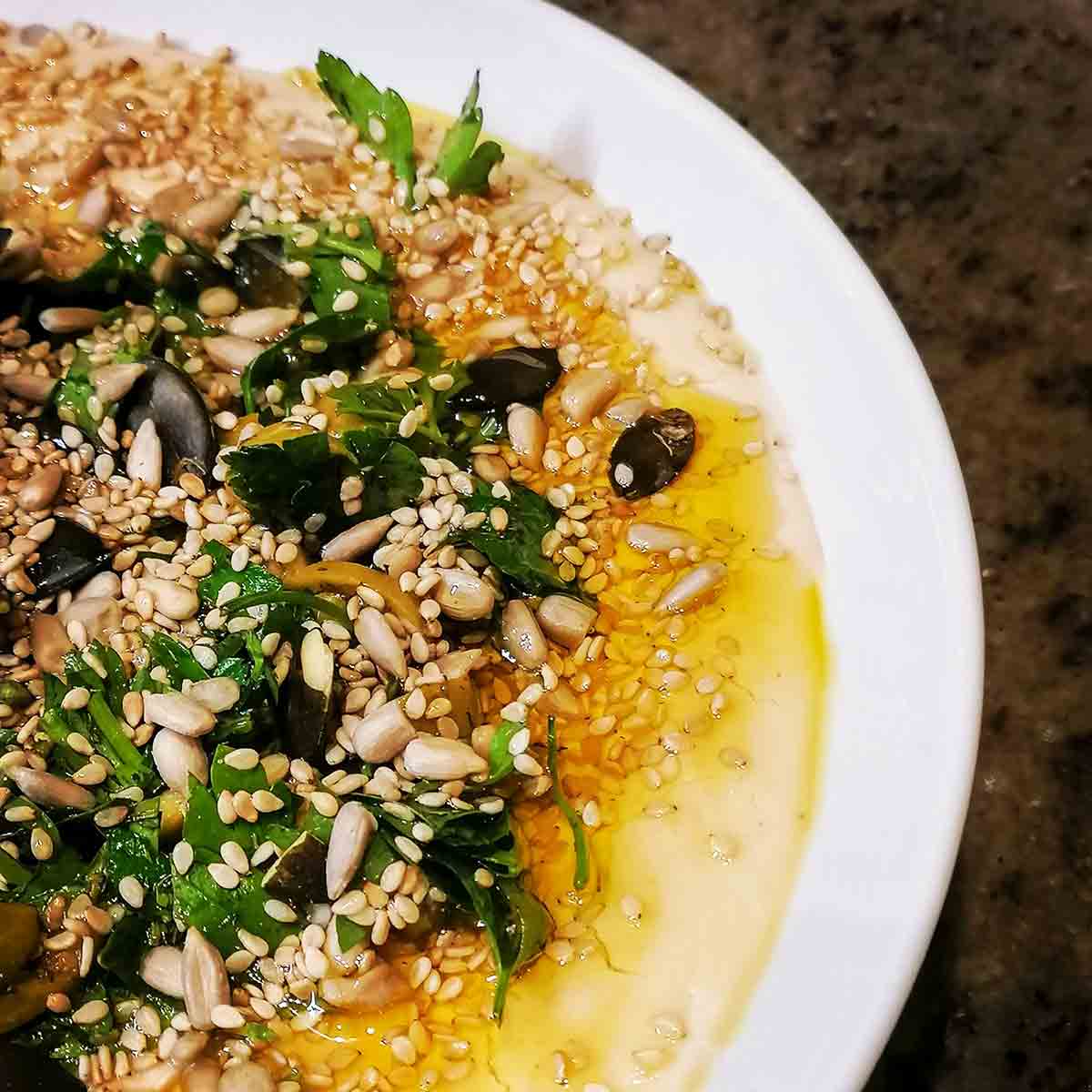
This easy white bean hummus is my kind of recipe, with so many things going for it, first and foremost flavor. Wonderfully creamy as promised by the author, with a lovely ivory color, it makes the perfect backdrop for the easily customizable toppings. I love that it calls for easy-to-source ingredients that won’t break the bank and has several steps that can be made ahead. It makes a whole bunch of hummus, but stores well in the refrigerator. As an added bonus, it’s healthy too! The dill and parsley worked well together, and the olives added an extra punch of interest.
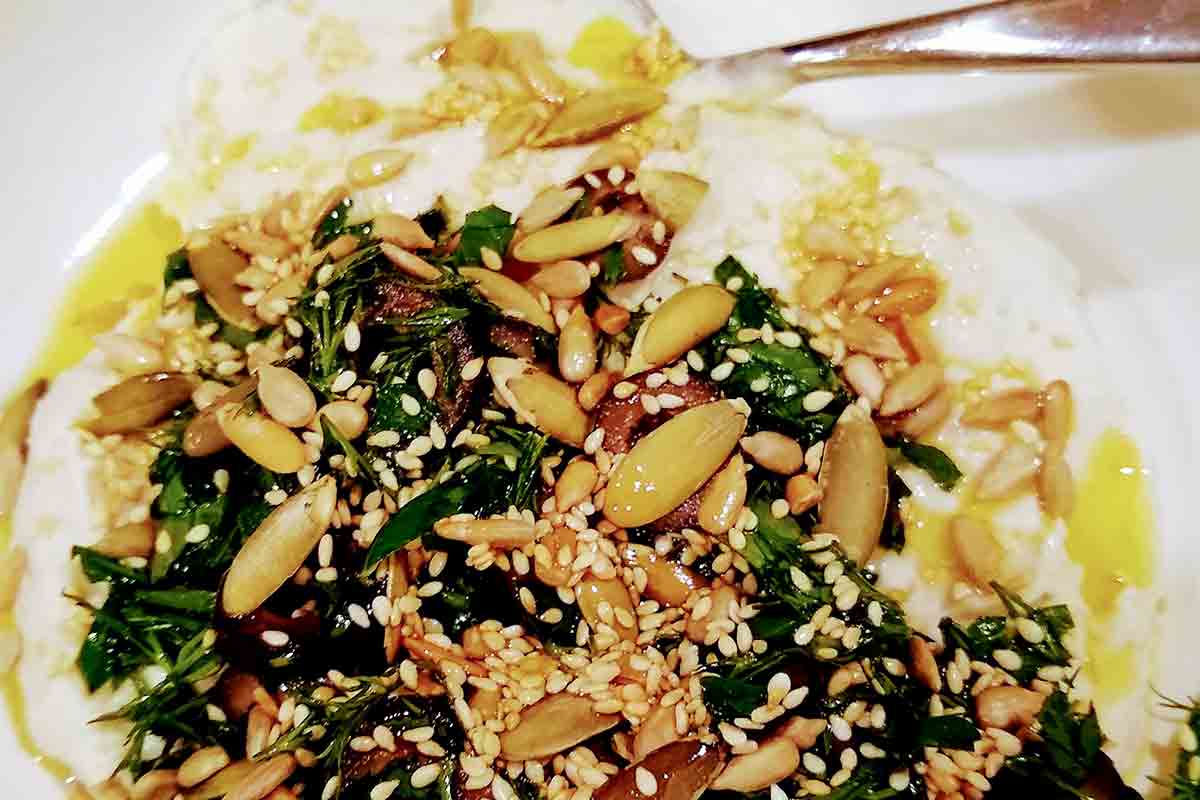
What I learned along the way: do toast your own seeds, let them get good and fragrant, and apply them with a generous hand. Keep an eye on the beans as they cook. My cannellini beans soaked for 17 hours, and were very tender after 1 hour. Go easy on the salt in step 3. You can always add more later. I switched over to kosher salt in this step for a less salty end product. Since the garlic is strained out, feel free to add more or let it sit the full 30 minutes in the lemon juice mixture for extra garlicky flavor.
I served this with sourdough pita, a green salad, and some cold leftover slices of roast beef for a complete meal. This is going to be a great recipe to repeat during the heat of the summer when you just do not feel like cooking.
This was a delightful and delicious creamy white bean hummus recipe. My usual complaint about homemade hummus is that the texture is grainy. I used cannellini beans and soaked them in salt and baking soda. After slowly simmering them for an hour and 18 minutes, they pureed into a nice smooth texture. I used 3/8 cup of lemon juice and no extra salt. After letting the hummus set in the refrigerator for a couple of hours I thought the flavor was perfect. No extra water or salt was needed. The chopped fresh herbs and toasted seeds added a wow factor to the visual appearance and taste of the hummus.
This is really delicious! It’s creamy with a lot of flavor and texture. I used Great Northern White Beans ~ they are what I was able to find at the store. When I added the beans, the mixture seized into a ball. When I immediately added water and the strained lemon juice mixture, it softened up and became very creamy.
White bean hummus is always good. It’s the lack of olive oil in this mixture that’s different, and even without it, this hummus is wonderfully creamy. The olives and herbs on top with a touch of olive oil and crunchy seeds are delicious, and allow for all kinds of beautiful platings. I served large stalks of steamed broccolini with olive oil, sea salt, and sumac on the side for dragging through the hummus.
Can I vote twice for this creamy white bean hummus? It has risen to the top of my list of appetizers to bring to a party, book club, game night, or make for myself. I had so much fun with this one. First of all, the beans cooked perfectly – I had no problems whatsoever with leathery or undercooked beans. With the other ingredients mixed in, the hummus was mild and creamy, and the flavor was balanced – no ingredient was overpowering. The fresh herb and seed salad itself is delicious and beautiful, and I enjoyed plating it almost as much as I enjoyed eating it. This recipe is amazing. We’ll be eating a lot of white bean hummus around here from now on.
Hummus sings when it is classically prepared. And so, I tend to eye roll when I come across a new recipe with yet another superlative and promise of reinvention. That said – this recipe IS sublime without too many changes or extra steps. Instead of chickpeas (and skipping the tedious step of removing their skins), white beans are simmered with a bit of baking soda and salt, then whipped to an ethereal and decadent-feeling texture.
The seed, olive, and herb salad topping is beautiful — endlessly adaptable to what herbs are in season and what seed mixture you have on hand. I served with store-bought pita that I split and quartered, gently tossing with olive oil, a generous pinch of cayenne, and a sprinkling coarse salt, then crisped into “chips” under the broiler.
I just couldn’t stop indulging scoop after scoop, standing up the whole time. I thought to myself, I guess this is dinner! Next time I will plate-up individual portions and set a place at my table to eat it. I used Rancho Gordo’s Alubia Blanca beans, tender small Spanish white beans. The remaining ingredients were from my pantry and local grocery. Truly yum. Transcendent!
This no-chickpea hummus variation is surely tasty enough, but what really sets it apart is the herb salad and seed topping, which was colorful and tasty atop the hummus served in a bowl for dipping with pita chips, and would also enhance a hummus wrap or sandwich, solo, or with baba ghanouj and/or falafel added in. I would like to come up with more uses for this topping duo, which was truly something special.
In terms of process, I gave the beans a nice long soak time, of nearly the full 24 hours, but still needed to simmer them for over an hour to reach very tender. I used fresh tahini from one vendor and Greek olive oil from another vendor at my farmer’s market, but none of the other ingredients were available there.















Sounds like a recipe I will try. Thanks!
You’re welcome, Wayne. Please let us know how it turns out.